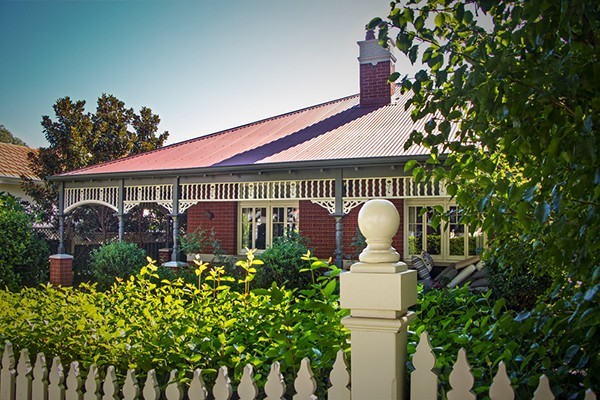What to expect this spring property season
Expect the major housing markets of Sydney and Melbourne to take a sizable dip and continue a downward trend, Canberra and Adelaide to enjoy slow and steady growth and Hobart to outshine its neighbours with continued stellar growth.
Sydney is currently in the grip of an orderly correction after a long boom which saw property prices increase by 85 per cent since 2013.
The downturn is the result of multiple factors and these include lower clearance rates and a sizeable increase in the supply of available housing, especially apartments, which in turn is contributing to falling rent in most areas.
As a result, investors yields are very low and without capital growth, most investors will not be tempted to buy another property.
Tougher lending criteria introduced by APRA and the Royal Commission are also having an indirect impact on the market with prospective buyers facing greater challenges obtaining a home loan.
The only area that is performing well is the first home buyers segment where demand has risen significantly.
Headship, which equals the number of households divided by the adult population, is on the increase after being at its lowest for many years.
The surge in prospective first home buyers should keep a lid on dramatic property value decline, however a further fall to the tune of five per cent is expected as the Sydney market bottoms out by the end of the year.
Savvy and cashed up investors will seize this period as a good buying opportunity for the longer term, with market looking to stabilise again in 2019.
Melbourne: Property market decrease of -6 per cent
Melbourne is following the trajectory of Sydney; however, it is sitting much earlier in the correction cycle.
Prices have remained stagnant for much of the year, but the market has experienced a more pronounced drop in the last quarter.
With a sizeable first home buyer’s market and booming population growth, to date Melbourne has weathered the price correction storm better than Sydney.
That said, with the same stringent lending criteria applying nationwide and an 11 per cent increase in listings from July 2017 to July 2018, it is expected that prices will finally drop by around six per cent, bottoming out at the end of the year.
Melbourne will experience a much smaller correction compared to Sydney and will return to growth much sooner.
Perth: Property market increase 1.5 per cent
Perth has been in a protracted downturn for many years, linked to the end of the commodity boom.
A slower stream of new migrants coming to the city as well as locals leaving due to limited job prospects has resulted in the housing market spiralling downwards.
The market appears to have finally bottomed out with only a slight decline, year on year.
A complete bottoming out by the end of spring is expected, followed by a slow resurgence of growth towards the end of 2018.
There won’t be any major property growth spurts in value to the Perth market for at least a couple of years.
Brisbane: Property market increase of 2 per cent
Brisbane has experienced slow growth over the last 12 months.
This is expected to continue until the end of the 2018, increasing by a further two per cent.
There will be no price correction as there has been in the other eastern seaboard capital cities.
That said, growth will be constrained due to stringent lending conditions affecting the rest of Australian borrowers as well as an oversupply of units in some pockets of inner city Brisbane.
Good interstate migration from its southern neighbours should help keep prices in the positive.
Adelaide: Property market increase of 2 per cent
Adelaide is certainly a ‘steady as she goes’ market without the high drama and major growth and decline of the Sydney and Melbourne property market.
It is expected that prices will increase by a further 2 per cent until the end of the year as listings stay around the same number as last year.
Slow and steady growth is good news for Adelaide home owners as house prices continue to increase and the market outlook remains positive.
Hobart: Property market increase of 5 per cent
Hobart has been something of the star performer amongst capital cities in Australia.
With prices growing just shy of 12 per cent in the last year, the standout growth does reflect major changes for the Tasmanian property market.
While price increases will continue, the heat will go out of the market by early next year.
Prices are expected to grow by another five per cent from now until the end of the year still keeping that high year on year rate of growth.
With vacancy rates in the city under one per cent and listings dropping nearly 25 per cent from July 2017 compared to July 2018 the underlying demand is still there for now.
Canberra: Property market increase of 3.5 per cent
With Canberra enjoying the benefit of being a relatively affordable housing market compared to Sydney and Melbourne as well as holding a large proportion of high income earners, house prices have continued to increase solidly this year.
Low vacancy rates and a stable demand for good rental accommodation due to transient government employees has created a perfect investors market.
In the next six months prices are expected to rise by 3.5 per cent which will result in an overall solid year for this consistent market despite headwinds from a difficult lending environment.
Darwin: Property market decrease of -3 per cent
Darwin is still bottoming out from the large falls seen after the end of the commodities boom.
With an oversupply of units yet to work their way through the system and be mopped up by prospective purchasers, it is expected that prices will continue to decline until the end of 2018, but at a slower pace.
A slow and slight upwards property turn is expected by mid 2019.
Source The Real Estate Conversation September 21st 2018 https://www.therealestateconversation.com.au/blog/steve-jovcevski/what-expect-this-spring-property-season/steve-jovcevski-mozo/mozo



